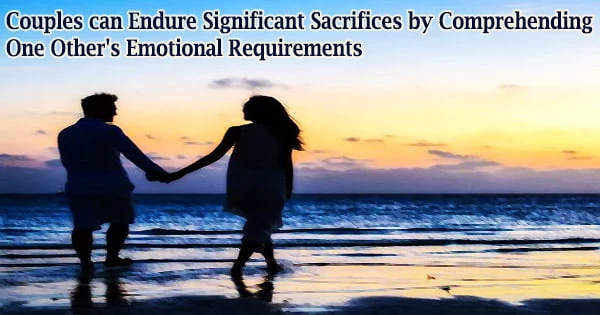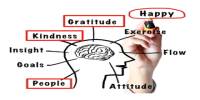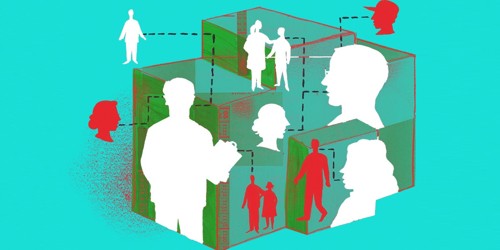Romantic couples frequently make sacrifices for one another, even when they are unaware of it. One of you needs to go to the pharmacy, and the other needs to arrive home early to make room for a repairman.
Even these small instances show how the list may quickly grow far longer than you might have anticipated if you stop to consider the daily exchanges you have with your partner.
Small sacrifices are one thing, but what about the larger costs that come with your relationship?
One of you has received a job offer or desires to return to school, both of which call for relocation. The other spouse is happy to stay put and is in a good location for their own job and close proximity to their extended family. It will cost a lot to move, both financially and emotionally.
According to the University of Toronto’s Gabriela C.M. Murphy and colleagues (2022), “Sacrifices may…be taxing on relationship quality when they are large-scale and highly costly to the self.” What makes the sacrifices particularly stressful for a couple, they go on to propose, is when one of the partners is high on what’s called “attachment insecurity.”
This type of attachment style, which can be present in stressful circumstances, comprises a fear of closeness and/or being abandoned. Large-scale sacrifices, or those the authors refer to as “life-altering,” are precisely this kind of stress.
Attachment Insecurity and Large-Scale Sacrifices
Why would one of these life-altering sacrifices trigger the dread of intimacy or abandonment so strongly?
Sacrifices may…be taxing on relationship quality when they are large-scale and highly costly to the self. What makes the sacrifices particularly stressful for a couple, they go on to propose, is when one of the partners is high on what’s called “attachment insecurity.”
Gabriela C.M. Murphy
Because one partner engages in self-protective avoidance behaviors or, alternatively, continually demands attention and reassurance, attachment insecurity is typically linked to poorer relationship functioning.
The avoidant person will feel that their autonomy is so threatened when one spouse wants to upend the applecart in the couple’s daily functioning that they will refuse to participate in any planning. The anxiously connected person would typically feel that the idea of making such a sacrifice will jeopardize the entire relationship.
There is a way out of this bind, however. According to the Attachment Security Enhancement Model (ASEM), partners can help a person who is insecurely attached feel less distressed.
The partner can present the possibility of a move in a way that preserves the avoidant spouse’s autonomy. Contrarily, the anxiously attached person can feel reassured if their partner repeatedly expresses their love and support for them.
These forms of “tailored prosociality” can, according to the predictions of Murphy et al., “prevent the erosion” of the relationship potentially caused by the request for a major sacrifice. Other factors can also come into play.
One is the spouse’s display of thankfulness, which can show how much they are aware of and appreciative for any sacrifices the partner is prepared to make. The alternative is for the partner to make everyday sacrifices that ultimately “make up” for any lost time.
Although the substantial sacrifice cannot theoretically be returned, it is still conceivable for the partner to accumulate a stock of smaller sacrifices (such as leaving early to meet the repairman) in order to increase equity.
Testing the Model’s Approach to Large-Scale Sacrifices
The authors collected an online sample of 229 people (155 women, 72 males, and 2 nonbinary) with an average age of 32 and who had been in a committed relationship (88 percent heterosexual) for little more than eight years in order to investigate these theories. Due to their partner’s work, every participant had a significant relocation.
Participants rated their own attachment orientation with questions such as “I try to avoid getting too close to my partner” (avoidant) and “I need a lot of reassurance that I am loved by my partner” (anxious).
In terms of the move, they rated whether their partner showed gratitude to them with questions such as “I think my partner feels grateful/thankful/appreciative to me for making this move with them.”
Participants were asked to rate how frequently their spouses had made small-scale sacrifices in eight different categories, such as “washing the dishes when it wasn’t their turn,” as part of the small-scale sacrifice measure. They also rated whether their partner seemed particularly willing to make these sacrifices with items such as “I think my partner feels very willing to sacrifice in our relationship.”
Participants also evaluated their level of commitment, closeness, trust, passion, and love in the relationship. The authors also asked participants to rate how frequently they argued, whether they felt resentful or angry toward their partner, and whether they sought to “alter things about your partner that concern you.” This was done to examine the negative side of relationship functioning. Participants were asked to rate whether they thought the change would be “good for our relationship.”
Do Prosociality and Gratitude Really Make a Difference?
As the authors had predicted, the transfer had a poorer effect on relationship quality for spouses who had higher levels of attachment insecurity. However, in line with the ASEM, the widespread sacrifice didn’t have to have negative consequences.
For those who avoided attachment, it was crucial for them to believe that their partners respected their autonomy and were typically appreciative of them.
In fact, if their spouses show strong relocation-related thankfulness, the avoidant couples might even come to see the move as advantageous to them. The results for anxiously attached partners showed that there needed to be a connection between the partner’s reported conduct and their own needs for reassurance, which is again consistent with the ASEM.
As a result, their partners were perceived as being capable of making the little, everyday sacrifices that effectively “confirmed” their love and fidelity. Anxiously attached people “may be on the lookout and benefit the most from partner behaviors that reciprocate their big, move-related sacrifice,” according to the scientists, who believe they have identified “a fresh buffer to the attachment literature” with this result.
Large or Small, How Can Your Relationship Survive a Sacrifice?
These remarkable results from a sample with real-world relationship stress give reason for hope that, even when an individual struggles with attachment issues, things can be kept from coming apart by a partner’s modest actions.
Even if most couples don’t necessarily make significant sacrifices like a major move on a regular basis, there is still something to be learned from this study. You can modify the ASEM to fit your unique set of life stresses if you have a partner who you suspect exhibits symptoms of insecure attachment.
You can employ one of the prosocial techniques through your words and deeds depending on whether they move away from you or, conversely, whether they require frequent reinforcement. The U. Toronto researchers cautioned against drawing conclusions about the incidence of conflict since they found no evidence of a buffering impact of prosocial conduct on spouses.
The constant decisions that couples must make in connection with the relocation, such as where to put the furniture or where to send the kids to school, seem to be enough of a stressor to cause strife. Despite how painful these disagreements may be, the study’s results indicate that the quality of your relationship shouldn’t be negatively impacted.
In conclusion, the Murphy et al. findings emphasize the value of appreciation and reciprocity. In fact, managing the “big things” in a relationship may be made easier by managing the “small things.”
















